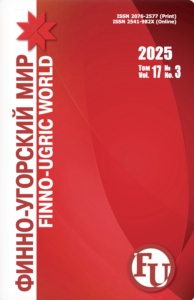DOI: 10.15507/2076-2577.011.2019.03.325-341
Aleksandr M. Matsuk,
Candidate Sc. {History}, Head of Laboratory of Archaeography and Publication
of Documents on the History of the Development of the European North of Russia,
Institute of Language, Literature and History, Komi Research Centre,
Ural Branch of the Russian Academy of Sciences
(Syktyvkar, Russia), almmatsuk@gmail.com
Introduction. Since the early 1950s, for developing spheres of the country’s national economy there has been an active training of personnel, including those with secondary specialized education. One of the key aspects of the development of the system of vocational education is an increase in the number of teachers. The main indicators of the quality of teaching in educational institutions, and accordingly the quality of training, are the educational level and teachers’ work experience.
Materials and Methods. The article shows the dynamics of the numbers and characteristics of the teaching staff of vocational educational institutions of Komi ASSR in the 1950s – 1980s, based on archival statistical data. The paper is based on the principles of scientific objectivity, historicism and authenticity. When working with sources the author used methods of statistical analysis and comparison.
Results and Discussion. The data obtained as a result of the study are presented in tables form for better transparency.
Conclusion. Analysis of the available data showed a positive trend both in the increase in the number of teaching staff in vocational educational institutions, and in the change in their main characteristics.
Key words: vocational education; colleges; teaching staff; Komi ASSR; 1950s-1980s.
For citation: Matsuk AM. The teaching staff of secondary specialized educational institutions of the Komi ASSR in the 1950s–1980s: characteristics, dynamics of the number. Finno-ugorskii mir = Finno-Ugric World. 2019; 11; 3: 325–341. (In Russian)






















